Arthroscopic Bankart Repair
The glenoid labrum, in combination with the ligament attached to the humeral head, functions to deepen the glenoid socket and contributes to joint stability. However, when subjected to a strong external force, the labroligamentous complex can be torn away from the glenoid. This type of injury is referred to as a Bankart lesion or Bankart injury.
In contact sports such as rugby or American football, dislocations are often accompanied by the labroligamentous complex being avulsed from the glenoid along with a bony fragment. This is known as a bony Bankart lesion or bony Bankart injury.
Surgical treatment involves repairing and restoring this detached complex to its original anatomical position.

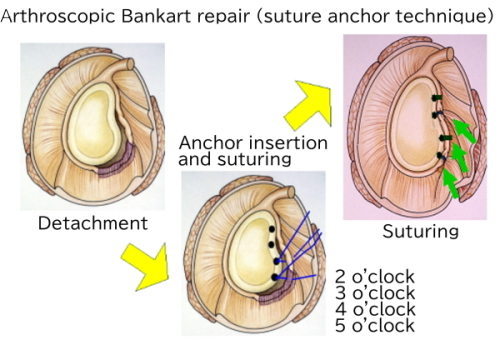
1.The labroligamentous complex is completely detached from the glenoid using an instrument called a rasp.
2.Suture anchors—screws with attached sutures—are inserted into the glenoid. Typically, four anchors are used.
3.The sutures are placed through the labrum and ligamentous complex with a wide bite, and the detached complex is lifted and sutured back in place. Under arthroscopy, this is performed using a technique called the sliding knot.
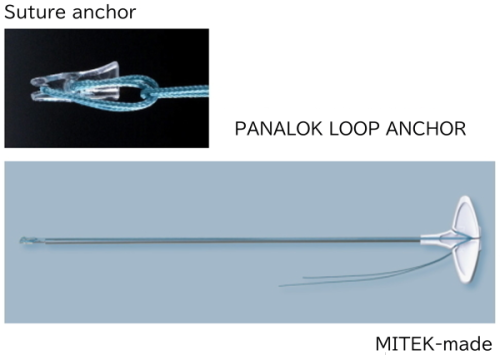
This is a screw with an attached suture. The tip is anchored into the bone and catches firmly, so the suture does not come out easily when pulled.

At our clinic, for cases of bony Bankart lesions or in contact sports athletes, we use a technique called the dual suture method, in which we insert two or three double-loaded suture anchors (anchors with two sutures each) into the glenoid to repair the detached ligaments.
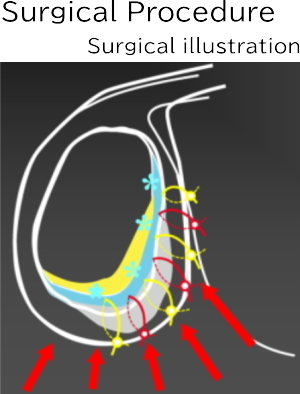
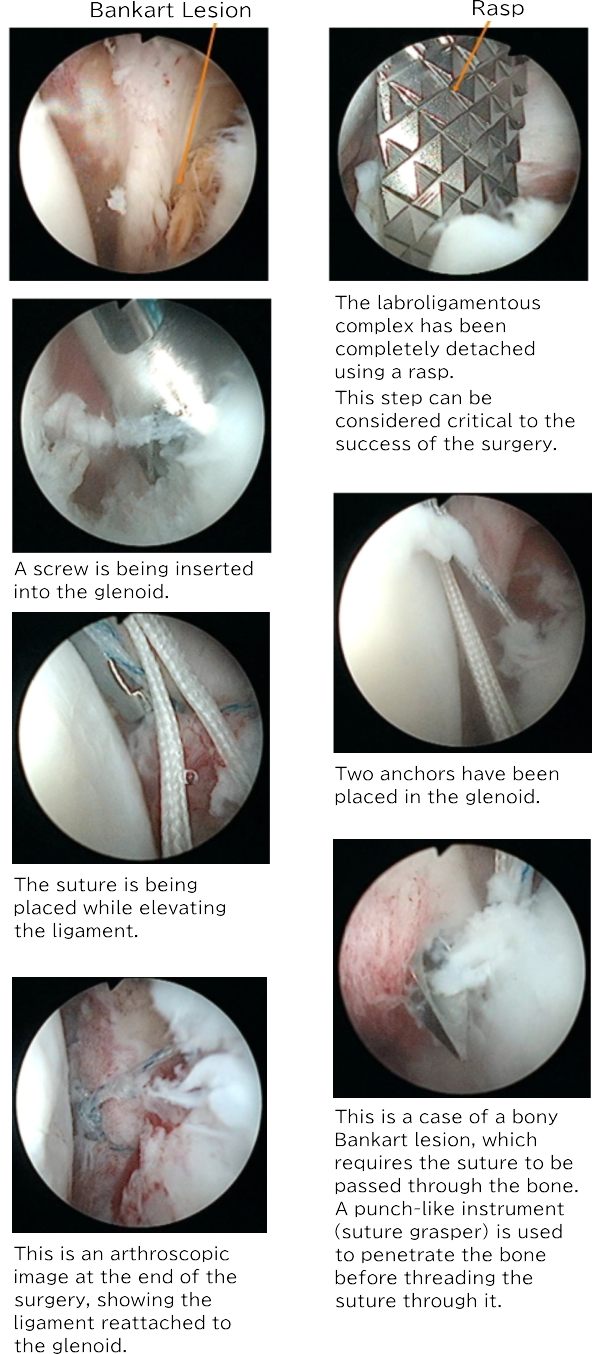
Arthroscopic surgery
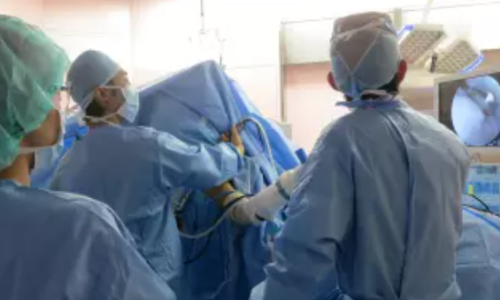
Arthroscopic surgery involves treating shoulder joint lesions by creating only small incisions. Through these incisions, an endoscope (arthroscope, camera) is inserted into the body, and the procedure is performed while viewing the area on a television monitor.
